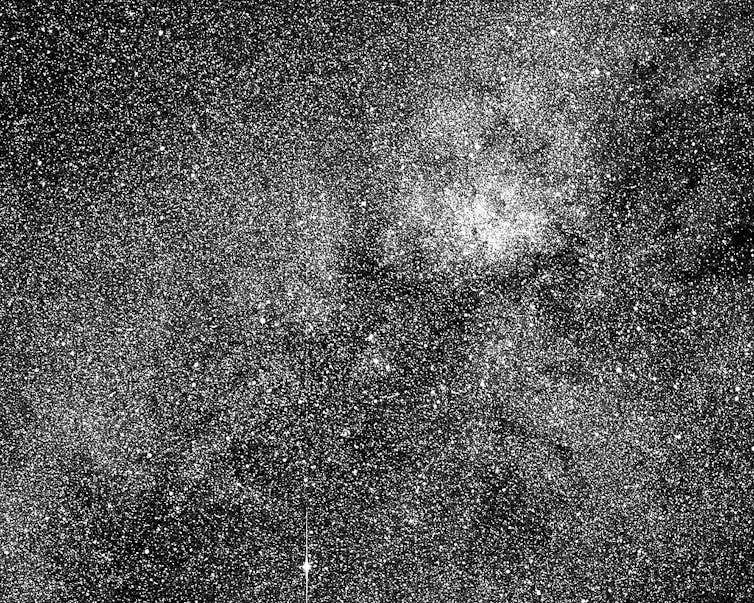 |
| 2015 Lamborghini Aventador LP700-4 Roadster, 2019 Lamborghini Urus "Bianco Icarus,” 2005 Ford Ford GT, 2019 Mercedes-Benz G-Class, and a 2019 Lamborghini Huracan are among the most expensive 2019 eBay Motors purchases. |
Today, eBay has released its annual 'Most Interesting and Expensive Purchases' of the year list, taking a look back at some of the most notable purchases of 2019. This year high-end shoppers scooped up everything from rare sports memorabilia, supercars, luxury timepieces, to experiences for good, regardless of the price tag.
In 2019 alone, some of the most expensive items sold on eBay fetched more than $4 million.
These high ticket items varied from over $7,000 to $4.5 million. And, the biggest sales came from multiple categories, including investment caliber cards, luxury vehicles, fine watches and more! Record high sales included a Tom Brady 2000 Autographed Playoff Contenders Championship Ticket Trading Card, which sold over $400,000 (signed by the six-time Super Bowl winner set the record for highest-sum ever paid for a football card) and a Michael Jordan 1997 Metal Universe Precious Metal Gems Card that sold over $350,000 (one of 10 ever made and the highest priced basketball card ever sold on eBay).
eBay also pulled the most expensive purchases on eBay for Charity in 2019, which included lunch with Warren Buffett, an overnight stay in the Cinderella Castle Suite at Magic Kingdom Park, benefiting organizations like The V Foundation for Cancer Research and Homes For Our Troops.
Check out a breakdown of 2019's most expensive purchases on eBay across gaming, sports, fashion, cars and more:
Top 20 Overall Most Expensive eBay Purchases in 2019
- 20th Annual Power Lunch with Warren Buffett to Benefit GLIDE: $4,567,888
- Tom Brady 2000 Autographed Playoff Contenders Championship Ticket Trading Card: $400,100
- Michael Jordan 1997 Metal Universe Precious Metal Gems Card: $350,100
- 2015 Lamborghini Aventador Roadster: $349,800
- 2014 Newmar King Aire Motorhome: $280,000
- 2019 Lamborghini Urus "Bianco Icarus": $245,995
- 1986 Piper Malibu: $225,000
- 2005 Ford Ford GT: $220,000
- 2019 Lamborghini Huracan LP580-2: $209,900
- 2012 Lamborghini Aventador 2dr Coupe: $200,000
- 2019 Porsche 911: $199,000
- 2009 Lamborghini Murcielago: $190,000
- 2013 Ferrari 458 Italia: $185,000
- 2014 Lamborghini Gallardo LP 560-4 Spyder: $174,995
- 2013 Rolls-Royce Phantom Drophead: $172,100
- 2017 Aston Martin Vanquish Coupe: $169,700
- Magic The Gathering MTG Black Lotus Card: $166,100
- Patek Philippe Grand Complications Calendar Manual Gold Men's Watch, 5270G-014: $139,500
- Patek Philippe Grand Complications Perpetual Calendar Chrono Watch, 5270G-018: $125,000
- Rolex New 18 Kt Rose Gold Masterpiece Pave Diamond Bracelet, 86285, Sant Blanc: $100,001
 |
| GLIDE’s 20th annual eBay for Charity Power Lunch with Warren Buffett sold for a record-breaking $4,567,888 on May 31, 2019, coinciding with the 20th anniversary of the legendary auction. |
Top 10 Most Expensive eBay for Charity Purchases in 2019
- 20th Annual Power Lunch with Warren Buffett to Benefit GLIDE: $4,567,888
- Miranda Lambert Closet Clear Out + Meet & Greet: $103,850.29
- Stay in the Cinderella Castle Suite at Magic Kingdom Park: $75,600
- Custom "Moon Landing" Under Armour Curry 6 Shoes Worn & Signed by Stephen Curry: $58,100.00
- UFC Ultimate Fan Experience + Private Meet & Greet with Dana White: $52,137
- Pitch Lunch with Dallas Mavericks' Owner Mark Cuban: $43,108
- Creation Storm, 2017 Art Piece by April Gornik: $39,100
- Attend the Premiere of Star Wars: The Rise of SkyWalker: $35,108
- Alabama Football Experience with Coach Nick Saban: $35,100
- Ultimate Le Batard Experience: $25,708
Most Expensive Cars Bought on eBay in 2019
- 2015 Lamborghini Aventador LP700-4 Roadster: $349,800
- 2019 Lamborghini Urus "Bianco Icarus": $245,995
- 2005 Ford Ford GT: $220,000
- 2019 Mercedes-Benz G-Class: $219,000
- 2019 Lamborghini Huracan LP580-2: $209,900
 |
| Record-breaking sale of a rare Tom Brady rookie trading card for $400,100 sold in February 2019, the highest price for a football card sold at auction. |
Most Expensive Trading Cards Bought on eBay in 2019
- Tom Brady 2000 Autographed Playoff Contenders Championship Ticket Trading Card: $400,100
- Michael Jordan 1997 Metal Universe Precious Metal Gems Card: $350,100
- Magic The Gathering MTG Black Lotus Card: $166,100
- Magic The Gathering MTG 1993 Alpha Black Lotus Card: $39,900.68
- Magic The Gathering MTG 1993 Alpha Birds Of Paradise Card: $37,877
Most Expensive Entertainment Memorabilia Bought on eBay in 2019
- 1964 Rolling Stones First Tour Concert Poster with Ticket Sub, Rare: $25,100
- World of Warcraft 15th Anniversary Signed Art Print: $20,000
- Rock-ola Beatles Yellow Submarine Juke Box, Original, New In Box: $18,500
- Life Size Star Wars R2D2 Remote Control Aluminum Full Size Prop: $17,500
- 1940s-1950s Hollywood Autograph Collection featuring James Dean, Marilyn Monroe and John Wayne: $15,100
- Stan Lee Signed Infinity Gauntlet: $15,000
Top Luxury Watches Bought on eBay in 2019
- Patek Philippe Grand Complications Calendar Manual Gold Men's Watch, 5270G-014: $139,500
- Patek Philippe Grand Complications Perpetual Calendar Chrono Watch, 5270G-018: $125,000
- Rolex 18 Kt Rose Gold Masterpiece Pave Diamond Bracelet: $100,001
- Richard Mille Automatic Chronograph in Rose Gold/ Titanium Watch : $96,900
- Rolex Daytona White Gold Auto 40mm Diamond Strap Deployant Watch: $89,950
Top Jewelry Bought on eBay in 2019
- 5.01 Yellow Diamond in Gold ring + 1ct Side Stones: $65,950
- 7.31 Ct Light Yellow Princess Cut Diamond in Platinum 18K: $55,000
- Tiffany & Co 2.52 Ct Lucida Diamond Engagement Ring: $41,500
- 8.84 Ct Natural Sapphire Diamond Ring: $40,000
- Roberto Coin Cento 2.008 Ct Round Diamond Solitaire Engagement Ring: $36,000
Top Handbags Bought on eBay in 2019
- Hermes Birkin 30 Malachite Togo Green Handbag: $9,850
- Hermes Birkin 30 Black Clemence Leather Palladium Hardware Handbag: $9,500
- Hermes Birkin Palladium Hardware Handbag with Key and Lock: $9,500
- Hermes Birkin 30CM Black Gold Tone Togo Handbag: $9,000
- Hermes Constance Handbag Evercolor 24: $8,924
Top Sneakers Bought on eBay in 2019
- Nike Zoom Vapor Roger Federer Tennis Shoes: $10,000
- Nike Air Mag 2016 Back to the Future, Marty McFly, Self Lacing: $9,000
- Nike Sb Dunk Low "Freddy Kreuger": $8,000
- 1985 Original OG Nike Air Jordan 1 Chicago, White, Black Red Bred 4280: $7,500
Top Vinyl Bought on eBay in 2019
- Northern Soul Del Larks Queen City 1967: $13,101
- Mozart's Piano Sonatas by Vlado Perlemuter: $13,000
- Beethoven's Violin Concerto by Leonid Kogan: $9,400
- George Szell Beethoven No 9: $7,760
- Bob Dylan Freewheelin' with 4 Different Tracks: $7,500
Top Comic Books Bought on eBay in 2019
- 1962 Marvel Amazing Fantasy #15, CGC 5.0, Spider Man's Origin/First Appearance, Huge Key Issue: $32,000
- Fantastic Four #1: $30,000
- Amazing Fantasy #15, Origin/First Appearance of Spider Man: $29,999
- Incredible Hulk #1, Hulk's Origin/First Appearance: $29,500
- Amazing Fantasy #15, Spider Man's Origin/First Appearance: $26,422
Top Action Figures Sold in 2019
- 1977 Star Wars Action Figures: $12,600
- Ideal Super Queens Batgirl Original 1967 Action Figure: $6,000
- Complete Set of Original Star Wars Kenner Action Figures from 1976 to 1985: $5,600
- Lord of the Rings Action Figures: $4,875
- Captain Action Super Queen 1967 Ideal Wonder Woman: $4,200
Top Video Games Sold in 2019
- NES Stadium Events NTSC Nintendo Game: $15,499
- NES Nintendo Kid Icarus VGA 85+, Gold: $14,000
- Super Mario World Nintendo Black Label SNES: $13,500
- Nintendo World Championships 1990 NWC Cartridge #273: $13,500
- Mike Tyson's Punch-Out Original NES 1989 White Label: $12,211
 |
Top eBay for Charity sales in 2019 also included an overnight stay in the Cinderella Castle Suite at Magic Kingdom® Park, custom "Moon Landing" Under Armour Curry 6 Shoes Worn & Signed by Stephen Curry, UFC Ultimate Fan Experience + Private Meet & Greet with Dana White. Campaigns have benefited organizations like The V Foundation for Cancer Research and Homes For Our Troops.
|





































